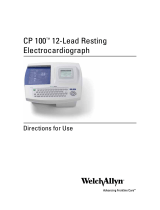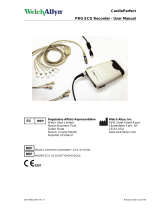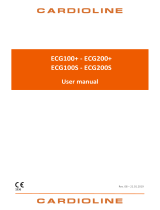
ECG Acquisition System Operator’s Manual
- 1 -
CONTENT
Preface................................................................................................................................- 2 -
Package List ....................................................................................................................- 2 -
How to contact us? ..........................................................................................................- 3 -
Safety and Effectiveness Considerations ........................................................................- 3 -
Warnings and Contraindications ......................................................................................- 4 -
Equipment Symbols.........................................................................................................- 5 -
EMC Declaration .............................................................................................................- 6 -
Chapter 1.Equipment Overview ........................................................................................- 10 -
1.1 Intended Use ...........................................................................................................- 10 -
1.2 Specifications...........................................................................................................- 10 -
1.3 Hardware Connection ..............................................................................................- 11 -
Chapter 2. Software System .............................................................................................- 12 -
2.1 System Requirements .............................................................................................- 12 -
2.2 Software Installation ................................................................................................- 12 -
2.3 Before You Begin.....................................................................................................- 13 -
2.4 Software Functions ..................................................................................................- 13 -
2.4.1 New Patient.......................................................................................................- 14 -
2.4.2 Report ...............................................................................................................- 16 -
2.4.3 Tools..................................................................................................................- 17 -
2.4.4 Exit ....................................................................................................................- 17 -
2.4.5 ECG ..................................................................................................................- 18 -
2.4.6 QTD ..................................................................................................................- 19 -
2.4.7 FCG ..................................................................................................................- 19 -
2.4.8 HFECG .............................................................................................................- 20 -
2.4.9 Hour ..................................................................................................................- 20 -
2.4.10 SAECG ...........................................................................................................- 21 -
2.4.11 VCG.................................................................................................................- 22 -
2.4.12 TVCG ..............................................................................................................- 22 -
Appendix ...........................................................................................................................- 23 -
Appendix A: Recommended Basic Procedure of Using Resting 12-lead ECG Software- 23 -
Appendix B: Maintenance and Cleaning........................................................................- 24 -
Appendix C: Trouble Shooting .......................................................................................- 25 -
Appendix D: Warranty Liabilities ....................................................................................- 26 -
























